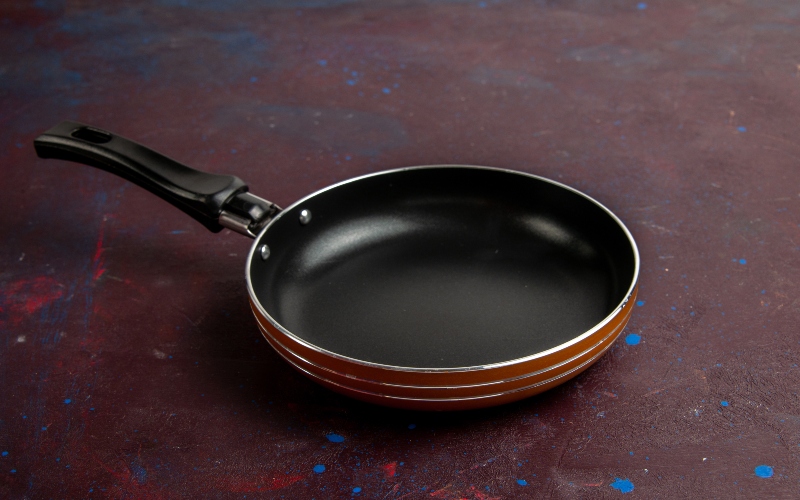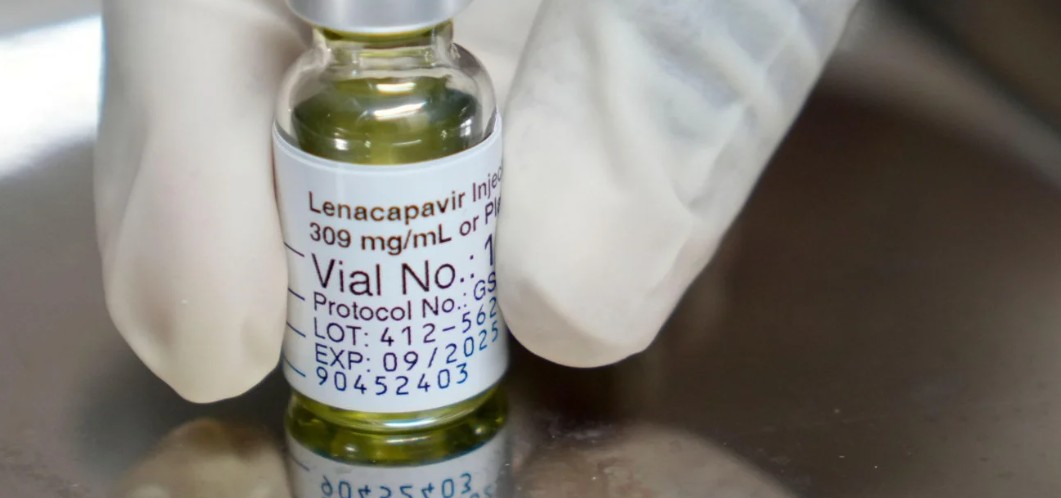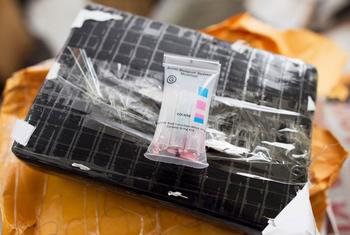Nine common household items that could be silent killers

Awareness and simple changes can reduce exposure to these hidden household toxins, protecting your health and that of your family.
We often think of home as a sanctuary, shielded from the chaos and contamination of the outside world.
However, research increasingly reveals that some of the greatest environmental threats to your health may exist within your own four walls. In fact, many of the items you bring into your home contribute to this risk.
More To Read
- Landmark French ruling against TotalEnergies sets stage for major African climate lawsuits
- Ecoball: How to make picking up litter fun and turn it into a game for kids
- Lancet study confirms mesothelioma risk from asbestos exposure
- Neurological disorders on the rise in low-and middle-income countries, warns WHO
- Kenya seeks World Bank, EU support to remove toxic asbestos roofs
- Contaminated water from River Kibos blamed for fish deaths at Dunga Beach
From the air you breathe to the furniture you sit on, the modern household has become a complex chemical ecosystem.
Scientists warn that a growing mix of synthetic compounds and hidden toxins may be linked to respiratory illnesses, hormone disruption, neurological damage, and even cancer.
Below, we uncover eight common culprits and the unsettling science behind them.
1. Nonstick cookware: the toxic legacy of “forever chemicals”
The sleek, nonstick pan, once celebrated as a marvel of convenience, has a darker side. Most are coated with substances belonging to the PFAS family (per- and polyfluoroalkyl substances).
These are nicknamed “forever chemicals” because they do not break down in nature or the human body. Studies have linked PFAS exposure to thyroid disorders, infertility, high cholesterol, weakened immunity, and several cancers.
A 2023 Harvard study found detectable PFAS in the bloodstreams of 97 per cent of Americans.
Heating Teflon-coated pans above 260°C can release microscopic particles and fumes that contaminate indoor air and settle on food surfaces.
These are the same counterfeit or second-hand pans and sufurias we find at the market, including thrift stores and distribution outlets.
Expert warning: “We’ve created a generation of chemicals we can’t destroy,” said Dr Amanda Krueger, an environmental toxicologist at Johns Hopkins University. “PFAS are everywhere, from cookware to drinking water, and they accumulate silently over time.”
2. Air fresheners and candles: poisoned by pleasant scents
That “fresh linen” or “ocean breeze” fragrance might bear a hidden cost.
Most commercial air fresheners and scented candles contain phthalates, benzene, and formaldehyde, chemicals known to cause respiratory irritation, hormone imbalance, and even cancer with chronic exposure.
A study from the University of York revealed that homes using plug-in air fresheners had formaldehyde levels 20–30 per cent higher than those without. These air fresheners come in different forms, including sprays, blocks, or sachets hang around your home.
The type of wax used to make your candle really matters a lot. Beeswax and soy wax are common waxes that are good. But as for paraffin wax, which is the most affordable, it becomes readily available for many people to use.
When burned, paraffin wax candles release soot and VOCs (volatile organic compounds), which can linger indoors for hours and affect your respiration, especially if you have young children.
Tip: Choose soy or beeswax candles, and open windows after lighting them. The best fragrance for your home, experts say, is clean air.
3. Cleaning products
Brightly labelled bottles promising “lemon-fresh” cleanliness may mask a dangerous blend of ammonia, chlorine bleach, and synthetic solvents.
These compounds can cause immediate irritation, headaches, coughing, watery eyes, and long-term problems like hormonal disruption and organ toxicity.
Mixing cleaners, even accidentally, can be deadly: ammonia and bleach react to produce chloramine gas, which can cause lung scarring within minutes.
“I tried mixing once with bleach, I almost choked and died on the spot,” Mary Atieno, a resident in Embakasi, told The Eastleigh Voice on Wednesday. “People think the cleaner the smell, the safer their home, but in many cases, they’re inhaling industrial-grade fumes.”
4. Plastic containers: microwaving your way to hormonal chaos
Every time you microwave leftovers or food in a plastic bowl or drink from a disposable bottle, tiny amounts of chemicals, especially Bisphenol A (BPA) and phthalates, can leach into your food and beverages.
These are endocrine disruptors, mimicking estrogen and interfering with reproductive hormones. Long-term exposure has been linked to obesity, infertility, metabolic disorders, and breast and prostate cancers.
Even “BPA-free” plastics may contain BPS, a chemical cousin with similar toxicity.
Solution: Store and heat food in glass or stainless steel containers and never reuse single-use plastics.
5. Carpets, mattresses, and upholstery
Soft furnishings can harbour an invisible smog of flame retardants, formaldehyde, and plasticisers.
These chemicals, used to make products fire-resistant or stain-proof, can off-gas for years, in a process known as “chemical leaching”.
Microscopic fibres and dust particles become vehicles for these toxins, which we inhale or ingest daily.
A 2022 study by the Environmental Science and Technology found that dust in the average home contains over 45 distinct chemical residues, many linked to cancer or endocrine disruption.
Tip: Vacuum weekly with a HEPA filter, air out new furniture before use, and opt for organic wool or cotton fabrics where possible.
6. Electronics and power strips
Our homes are increasingly saturated with electromagnetic fields (EMFs) from Wi-Fi routers, phones, and appliances now that almost everything is digital.
While the science on EMF safety remains debated, some studies suggest prolonged exposure may affect sleep, concentration, and cell metabolism.
Old electronics also contain lead, cadmium, and brominated flame retardants, toxins that can leach into dust or groundwater if improperly disposed of.
Advice: Unplug devices overnight, use wired connections when possible, and recycle e-waste responsibly.
7. Tap water
Municipal tap water, though treated, can still contain lead, chlorine by-products, PFAS, and microplastics.
A 2024 global analysis by the World Health Organisation (WHO) found microplastics in 83 per cent of sampled tap water, raising concerns about long-term ingestion.
“We’ve cleaned water enough to prevent disease, but not enough to eliminate chronic chemical exposure,” warned Dr Joseph Anaba, a water safety researcher.
Solution: Use an activated carbon or reverse osmosis filter and test the water in your home annually for heavy metals, or installa water filter in your house tap.
8. Soaps and body washes
That luxurious lather may come at a hidden cost. Many soaps and body washes rely on triclosan, an antibacterial agent banned in some countries but still used in others.
Triclosan has been linked to antibiotic resistance and may interfere with thyroid hormone regulation. Even small residues washed down the drain can persist in waterways, damaging aquatic ecosystems.
Fragrance compounds are another major concern. The term “fragrance” can legally hide up to 4,000 unlisted chemicals, including benzene derivatives, aldehydes, and toluene, some of which are classified as carcinogenic or neurotoxic.
“People think ‘antibacterial’ means safer, but most bacteria on our skin are protective,” said Dr Naomi Kato, a dermatologist at Kyoto University. “We’re washing away the body’s natural defence and replacing it with a thin film of synthetic chemicals.”
What to do: Choose fragrance-free or essential oil-based soaps. Avoid antibacterial claims unless medically necessary.
9. Laundry detergents: the invisible skin invader
That “fresh spring breeze” scent on your clothes? It is a blend of synthetic musks, enzymes, and stabilisers, many cling to fabric fibres and release into the air with each movement.
One of the biggest offenders is 1,4-dioxane, a by-product of detergent manufacturing. Classified as a probable human carcinogen by the US Environmental Protection Agency (EPA), it is found in trace amounts in many mainstream laundry products.
Phosphates, once common in detergents, have been phased out in many regions but persist in others, including Kenya, where they cause water pollution and algal blooms that choke aquatic life.
Residues left on clothing can also trigger eczema, asthma, and allergic dermatitis, especially in children whose immune system is still developing.
Avoid “optical brighteners” and “colour-safe bleach"; rinse clothes thoroughly, or use an extra rinse cycle.
Top Stories Today













































